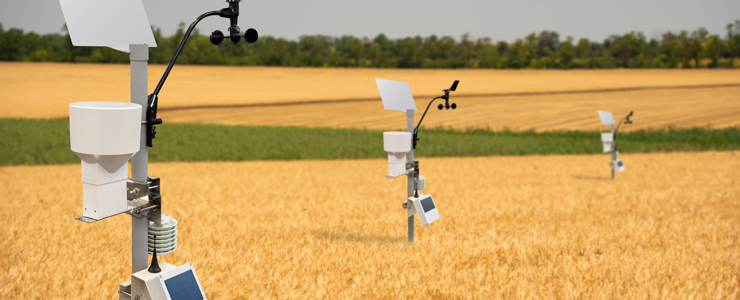In is blog, we embark on a journey to demystify the intricacies of Narrowband Internet of Things (NB-IoT) technology. As the demand for efficient, low-power connectivity for IoT applications continues to surge, so does the curiosity surrounding NB-IoT. To guide you through the maze of questions, we’ve compiled a list of the 8 most FAQs about NB-IoT. From its applications to key differentiators, power-efficient design and integration with existing networks. We’ll explore the essentials that every enthusiast, developer or curious mind needs to know.
1. What is NB-IoT?
As a specialised network technology, NB-IoT, connects a massive number of small, low-power gadgets to the internet. NB-IoT ensures the device stays connected efficiently, conserving energy and extending battery life.
While NB-IoT is primarily designed for connecting Internet of Things (IoT) devices, it is not typically used for consumer connections. These, on the other hand, are commonly served by traditional cellular technologies such as 4G LTE and 5G. These technologies are designed to provide higher data speeds and support the data-intensive requirements of smartphones, tablets, and other personal devices.
NB-IoT is crucial in enabling the IoT by providing efficient, low-power connectivity for a wide range of IoT applications. Think of it as the quiet, reliable network that helps devices communicate seamlessly, making our homes and cities smarter without draining their power.

2. What is NB-IoT technology?
NB-IoT stands out in the realm of connectivity by offering distinct advantages compared to other networks, particularly in the context of the IoT. Firstly, it prioritises energy efficiency, allowing devices to operate on minimal power and significantly extending the battery life of connected devices.
Additionally, NB-IoT boasts excellent coverage in both urban and remote areas. With robust signal penetration suitable for devices situated deep indoors or in underground settings.
Comparatively, traditional cellular networks (2G, 3G, 4G) may offer higher data speeds but may not be as well-suited for the low-power, wide-area requirements of many IoT applications. NB-IoT strikes a balance by prioritising energy efficiency, widespread coverage and cost-effectiveness, making it an excellent choice for a variety of IoT scenarios.
3. What is NB-IoT connectivity used for?
NB-IoT plays a transformative role across diverse domains. In smart cities, it facilitates the implementation of intelligent solutions like smart street lighting, waste management and parking systems. Leading to increased efficiency, reduced energy consumption and an overall enhancement of urban living.

In agriculture, NB-IoT is instrumental in applications such as soil monitoring and precision farming, empowering farmers to make data-driven decisions. Such as to optimise resource usage and boost crop yields.
In industrial settings, NB-IoT contributes to the Industrial IoT (IIoT) by connecting sensors for equipment monitoring, predictive maintenance and operational efficiency improvements.
The technology finds application in utilities for smart metering, enabling remote monitoring and management of water, gas, and electricity consumption. This results in improved resource utilisation and cost savings.
Additionally, NB-IoT is integral to asset tracking, healthcare solutions for remote patient monitoring, home automation systems, retail inventory management and wearable devices. Offering real-time insights and fostering advancements in each respective field.
4. How does NB-IoT connectivity work?
NB-IoT employs a narrowband transmission approach, optimising power consumption, supporting dormancy modes, enhancing coverage, enabling massive device connectivity, ensuring spectrum efficiency, and seamlessly integrating into existing cellular networks. This results in a reliable and standardised communication platform for a variety of IoT applications.
5. Does NB-IoT need a SIM card?
Yes, NB-IoT devices typically require a SIM (Subscriber Identity Module) card for authentication and access to the cellular network. The SIM card stores essential information, including the unique identifier for the device and the authentication keys required to establish a secure connection with the network.
The SIM acts as a key to the network, allowing the device to securely communicate over the cellular infrastructure. The use of SIM cards provides a standardized and secure approach to managing subscriptions and access to NB-IoT networks. Additionally, it enables secure over-the-air updates and the ability to manage and monitor the connectivity of devices remotely.

6. Does NB-IoT support SMS?
At present, NB-IoT does not offer support for SMS. This renders it incompatible with eSIM, which depends on SMS for managing over-the-air profile transactions.
Although the initial NB-IoT standard does not incorporate SMS, there remains the possibility of future changes, allowing Mobile Network Operators (MNOs) to implement the technology independently.
It is also worth noting that Voice is not a supported feature in NB-IoT. The design focus of NB-IoT centres on facilitating data-only connectivity for IoT devices.
7. What is the difference between LTE-M and NB-IoT connectivity?
LTE-M (Long-Term Evolution for Machines) and NB-IoT are both Low Power Wide Area Network (LPWAN) technologies designed to support IoT. While they share similarities, there are key differences between LTE-M and NB-IoT.
The primary difference lies in their approach to data transfer. Tailored for applications with low data rate requirements, NB-IoT excels in scenarios such as environmental monitoring or smart agriculture. It excels in providing long-range connectivity with minimal power consumption. On the other hand, LTE-M is designed to offer slightly higher data rates, making it suitable for applications requiring moderate data transfer, such as asset tracking or wearables. LTE-M also provides a balance between data speed and power efficiency, making it versatile for a broader range of IoT applications compared to NB-IoT.
Choosing between NB-IoT and LTE-M depends on the specific requirements of the IoT application, including data rate, power consumption, coverage needs, and deployment considerations. Both technologies offer valuable solutions for different use cases within the IoT ecosystem.
8. Is NB-IoT part of 5G?
NB-IoT is not a part of the 5G cellular network standard. Instead, NB-IoT is associated with the 4G LTE (Long-Term Evolution) standard. Specifically, the 3rd Generation Partnership Project (3GPP) standardised NB-IoT as a narrowband radio technology under LTE Release 13.
While 5G networks provide enhanced capabilities, higher data rates and lower latency for various types of communication, NB-IoT is designed to meet the specific requirements of LPWA IoT applications. The deployment and use of NB-IoT often occur in the context of existing LTE networks.
Conclusion
As we conclude our exploration of NB-IoT, it’s evident that the future of connected devices is more exciting than ever. Regardless of whether you’re a tech enthusiast, a developer, or a business owner seeking to revolutionise your operations, NB-IoT opens the door to new possibilities. In the fast-evolving landscape of technology, embracing NB-IoT holds the promise of transforming the way we connect and innovate.
For various scenarios, such as local deployments within cities, regions, or countries, NB-IoT or even LTE-M may be preferable due to lower hardware costs and enhanced battery life. However, despite these advantages, both NB-IoT and LTE-M exhibit fragmented coverage around the globe. In such cases, other low-power technologies, like LTE Cat-1 BIS, may be a better choice, offering more comprehensive and reliable connectivity.
If you’re eager to delve deeper into NB-IoT connectivity solutions don’t hesitate to take the next step. Reach out to the experts at Wireless Logic, where innovation meets expertise. We, as a team, are ready to guide you through the world of NB-IoT connectivity, ensuring a seamless journey and empowerment for your applications.


